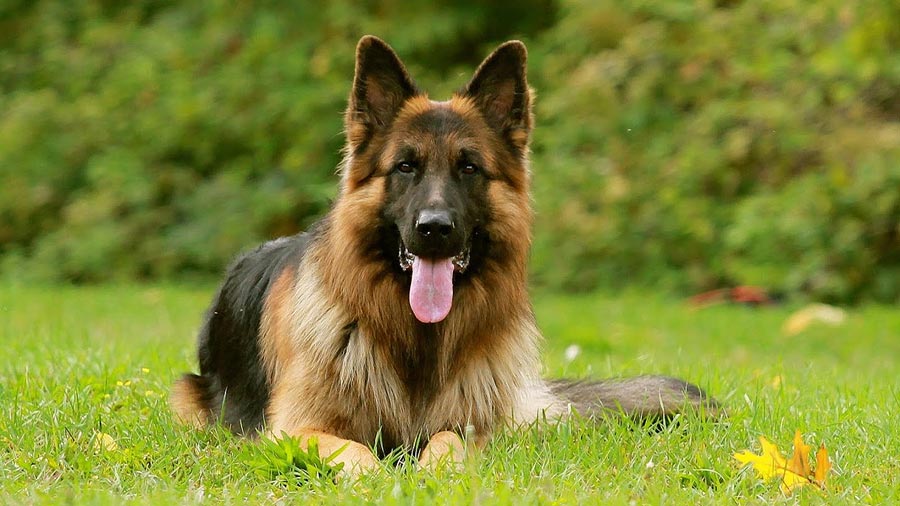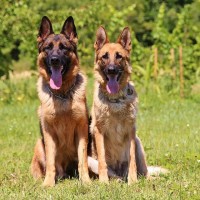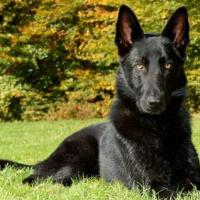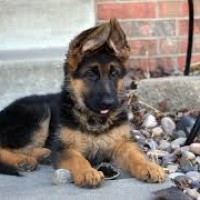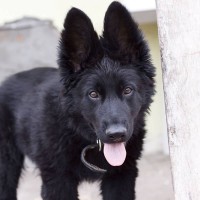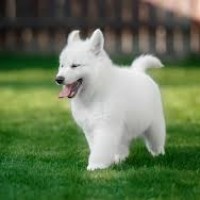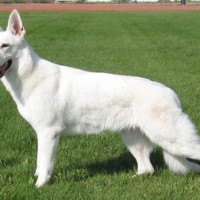Breed information
Group:
Herding
Life span: 9–13 years
Height male: 60–65 cm / 24–26 inches
Height female: 55–60 cm / 22–24 inches
Weight male: 30–40 kg / 66-88 pounds
Weight female: 22–32 kg ./ 48-71 pounds
Character: Alert, Confident, Courageous, Curious, Intelligent, Loyal, Obedient, Watchful
History
The German Shepherd was produced in Germany in the late 1800s, initially to oversee vast herds of sheep. The trailblazers of the GSD came about because of crosses of local dogs in northern and central Germany. The German Shepherd's part was to move along the edges of the rush and usher stray sheep once more into the overlap – not by barking or foot nipping, which could freeze the sheep, however rather by quiet, relentless and stealthy movements. The advanced German Shepherd evidently was first shown at a show in Hanover, Germany, in 1882. Founded in 1899, the German Shepherd Dog Club of Germany (the Verein hide Deutsche Schaferhunde) was the first club of this breed. The German Shepherd's popularity developed quickly in Germany and spread worldwide all through the 1900s.
There apparently were more than 40,000 GSDs "enrolled" in the German Army in World War I. They were capable collaborators to the Army and the Royal Air Force amid World War II.
Until 1915, there were three particular coat writes: smoothhaired, longhaired and wirehaired. The wirehaired assortment has since vanished. The present canines are liked to have a medium-length, smooth coat.
Description
German Shepherds are a popular selection for use as working dogs. They are especially well known for their police work, being used for tracking criminals, patrolling troubled areas and detection and holding of suspects. Additionally thousands of German Shepherds have been used by the military. Usually trained for scout duty, they are used to warn soldiers to the presence of enemies or of booby traps or other hazards. German Shepherds have also been trained by military groups to parachute from aircraft or as anti-tank weapons. They were used in World War II as messenger dogs, rescue dogs and personal guard dogs. A number of these dogs were taken home by foreign servicemen, who were impressed by their intelligence.
Health
Many common ailments of the German Shepherd are a result of the inbreeding practiced early in the breed's life. One such common ailment is hip and elbow dysplasia which may cause the dog to experience pain later on in life and may cause arthritis. A study conducted by the University of Zurich found that 45% of the police working dogs were affected by degenerative spinal stenosis, although a small sample size was used. The Orthopedic Foundation for Animals found that 19.1% of German Shepherd are affected by hip dysplasia. Due to the large and open nature of their ears, German Shepherds are not prone to ear infections because there is no hair in the outer ear canal to hold debris or moisture. According to a recent survey in the UK, the median life span of German Shepherds is 10.95 years, which is normal for a dog of their size.
Degenerative myelopathy, a neurological disease, occurs with enough regularity specifically in the breed to suggest that the breed is predisposed to it. A very inexpensive DNA saliva test is now available to screen for degenerative myelopathy. The test screens for the mutated gene that has been seen in dogs with degenerative myelopathy. A small study in the UK showed 16% of young asymptomatic GSDs to be homozygous for the mutation, with a further 38% being carriers. Now that a test is available the disease can be bred out of breeds with a high preponderance. The test is only recommended for predisposed breeds, but can be performed on DNA samples from any dog, collected through swabbing the inside of the animal's cheek with a sterile cotton swab. Prospective German Shepherd buyers can now request the test from the breeder or buy from a breeder that is known to test their dogs.
Personality
The German Shepherd Dog is perhaps best known as the strong, courageous and obedient guide dog for the disabled and service dog of police K-9 and search-and-rescue units, valued for its tenacity, intelligence, loyalty and focus. These dogs are often sought as guard dogs and protectors. However, while they are first and foremost a herding breed, but it also can make outstanding, loving family companions. German Shepherds have a rather distinct personality marked by a direct and fearless expression, obvious self-confidence and reluctance to develop indiscriminate friendships. They tend to be indifferent to strangers and can be aloof; however, once they befriend you, their devotion is life-long.
Activity Requirements
German Shepherds can be as energetic as they are large, although they should be of even disposition and unflappable, with a restrained, composed and confident temperament. They should be patient, attentive, faithful and determined. They can be bold but should not be unnecessarily aggressive. They do not require an enormous amount of daily exercise, but they certainly are not the ideal breed for apartment dwellers or people who live alone and work long hours. They tend to bond well with children and enjoy participating in family activities like hiking, swimming, picnicking, running and others. Farmers are often partial to German Shepherds because of their great intelligence, solid herding skills and seemingly endless energy. Regular walks will suit most for this breed. Many also enjoy off-leash romps in secure dog parks. They are particularly well suited to obedience training.
Trainability
To combat boredom, mental exercise is excellent for the German Shepherds. They are extremely intelligent and, like many other breeds, enjoy working with their owners. German Shepherds thrive in advanced obedience work and on agility courses. They also can thrive with regular games of fetch with a stick, ball or Frisbee. German Shepherds can be trained to do almost any task set before them. They are smart, bold, alert, and single-minded when necessary and eager to please their people. They are powerful but still agile. While highly trainable, they should be socialized and trained young in life. This requires a firm, consistent and kind handler. German Shepherds frequently project dominance if they feel that they can get away with it, which is unacceptable in a companion animal living in a world filled with dogs, cats, children and other distractions.
Best Training Equipment Trainers Recommend
Behavioral Traits
German Shepherd‘s are protective by nature, which is why they make excellent guard dogs and police dogs. Once a dog bonds with it‘s family, it may become protective of them when approached by strangers or by friends. This protectiveness may be appropriate or inappropriate, depending upon the situation, and the dog may not always be able to discriminate between those situations. It is important to train German Shepherds to recognize welcome and unwelcome guests. They may bark as strangers or familiar friends approach your home, but proper socialization and training from an early age will help this very intelligent and proud breed to become well-integrated into a normal social routine. Neither aggression nor timidity should be tolerated. Reputable breeders and trainers generally agree that aggressive tendencies or excessive shyness for this breed usually are a product of poor breeding, poor training, or both. Potential owners of German Shepherd should explore their dog's background and commit to an appropriate socialization and training protocol before making a life-long commitment to the dog.
A German Shepherd can provide years of loyal companionship and faithful service. Because of their size, trainability, self-confidence and poise, proper training and socializing is very important. People without the time or dedication to commit to really working with their German Shepherd should perhaps select a different breed. Those who are willing to devote the time and energy to train their German Shepherd properly will find their investment returned tenfold in a well-adjusted, loyal family companion.
Shedding
The German Shepherd Dog has a medium-length, double coat consisting of a dense, harsh, and close-lying outer coat with a softer undercoat. The breed is easy to maintain, usually requiring just a quick brushing every few days or so to help remove loose hairs, but they do shed more profusely once or twice a year. During these periods, more frequent brushing will help control the amount of hair that ends up around the house and on the furniture. The German Shepherd only needs an occasional bath. It is important to trim or grind his nails every month if they are not worn down naturally, as overly long nails can cause pain and structural issues.
